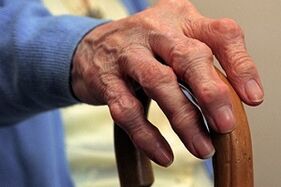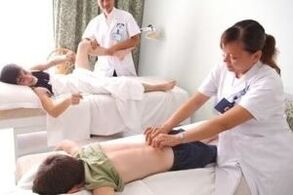Degenerative joint arthrosis, with the development of which destruction of cartilage tissue occurs, is often diagnosed in men and women at a young age. The characteristic symptom of the onset disease is severe pain, which occurs even at rest, when there is no load on the limbs. To reduce unpleasant discomfort and prevent destruction of cartilage structures, complex treatments are prescribed.

What is this disease?
Osteoarthritis is a devastating and severe chronic disease that affects a large portion of the population.
The pathology is characterized by inflammatory lesions of cartilage tissue in small and large joints. Because of degenerative changes in cartilage, the periarticular capsule, synovial membranes, muscle and ligament structures, and bone tissue are affected. The cause of the development of such pathology is considered to be disturbed metabolism. A complete cure for this disease is not possible, will only bring the patient into remission, which is why arthrosis, which gradually damages the articular system, is dangerous. Joint disease is often diagnosed in old age, but it also occurs in young people who are already in their 20s. It is important to diagnose the early phase of its development. This will prevent new complications and help the body overcome the problem.
Reasons for development

Violation of metabolic processes in the articular joints provokes the beginning of the development of the disease. Pathology is characteristic of one or several joints at the same time. Other causes of arthrosis are:
- hormonal changes in women during menopause;
- violation of blood supply to the joints;
- persistent hypothermia;
- chronic damage;
- old age;
- overweight;
- increased pressure on the joints;
- autoimmune pathology;
- diseased thyroid gland;
- hemophilia;
- herpes;
- hepatitis;
- allergies in which bone and articular structures are affected;
- varicose veins;
- strict diet or unbalanced diet;
- excessive physical activity;
- descent;
- bad environment.
Arthritis changes are observed in people who have to work in difficult physical conditions. These are specialized specialties:
- miners;
- brick;
- metallurgist;
- blacksmith;
- angler.
Levels and characteristic symptoms

Signs of arthrosis develop gradually and increase as the pathology progresses. There are 3 stages of arthrosis:
- In the first stage, no morphological changes are shown, only the composition of the synovial fluid is disturbed, as a result of which the cartilage tissue receives fewer nutrients, quickly losing its elasticity and resilience. There is inflammation in the joint cavity, the pain begins to interfere.
- In stage II, the degenerative process develops more actively. The cartilage of the joints is gradually destroyed, uric acid is not completely removed from the body, as a result of which bone growth first appears in the joints. This limits the movement of the articular joints, so that inflammation progresses, persistent pain in the muscles of the limb is disrupted.
- Grade III manifests itself as a complete thinning of the cartilage tissue of the joint, and deformation of the joint itself is also observed. There are signs of axial change in the limbs. Also, degenerative disorders of the ligament apparatus begin, as a result of which the limb is no longer able to move normally, hypermobility is observed in combination with a violation of the natural range of motion. The pain in stage 3 arthrosis is constant, a person can not lie down quietly, sleep, rest. Threatening joint nutrient deficiencies will interfere with the function of the affected limbs.
Other symptoms

The disease causes characteristic symptoms in a person, which are conventionally divided into 4 groups:
- It hurts. Severe pain in the joints, which does not disappear for a long time, is the first symptom that characterizes the development of pathology. The pain is caused by movement or physical activity, but at rest the person gets better, the discomfort subsides.
- Crispy. These symptoms are expressed in an increased degree of arthrosis. Because the cartilage tissue of the joints is deformed for a long time, the bone structures begin to come into contact and rub against each other. As this problem increases, the pain syndrome will also increase.
- Impaired joint mobility. Progressive bone arthrosis leads to increased growth of bone formation. As a result, muscle tissue spasm, and gaps in the articular joints are gradually reduced. The pressure on the joints increases, which also causes the limbs to become immobile.
- Joint deformities. Rapid osteophyte growth can provoke compound modification, but these symptoms are already developing at a later stage.
Variety of joint arthrosis
Distinguish between idiopathic or primary and secondary arthrosis. The first type is an independent disease that occurs as a result of physiological, age -related changes. But the secondary form arises with a background of chronic injury and can manifest itself at any age - at the age of 20 or 30 years. Given which joints are affected, arthrosis is differentiated:
- shoulder or elbow joints;
- hip or knee joints;
- backbone.
The disease also occurs:
- refined;
- not specified.
Why is it dangerous?

Acute arthrosis is terrible because, as the pathology develops, the spine is involved in a degenerative process, as a result of which a hernia appears. Therefore, it is important to treat arthrosis effectively in the early stages of development, when it is possible to use conservative methods. If the medication is given on time or the patient tries to heal on his own, the following disorders begin to appear:
- deformation and destruction of articular elements;
- limb movement limits;
- disability;
- violation of the biomechanics of the spine due to the fact that the disc has subsided.
Diagnostics
Before prescribing effective treatment for arthrosis or removing the affected area, it is important to know the exact diagnosis. Therefore, after the initial examination, the patient is sent to pass:
- general clinical analysis of blood and urine;
- puncture of synovial fluid, if there is a suspicion of synovitis of the knee joint;
- samples for histological examination of biopaths.
Instrumental diagnostics are performed - radiography. If the patient has gonarthrosis (especially pronounced with varicose veins), X-rays of the knee joint should be taken. With dysplasia and arthrosis of the hip joint, this area of the musculoskeletal system is examined. To determine the type of damage to the cartilage structure, it is recommended to undergo ultrasound, MRI or CT examination.
How to treat?
Medication and surgery
Early arthrosis is treated with conservative therapy. The drug is selected by the doctor strictly according to the individual scheme. If a person has a stomach ulcer or other pathology of the organs of the gastrointestinal tract, then oral administration is contraindicated. In this case, the injection will have the right effect. Proper prescription of medication will help increase the activity of metabolic processes in the affected area. An effective group of drugs, thanks to which forgiveness will last:
- Anti-inflammatory;
- Corticosteroid hormones;
- Chondroprotectors.
If conservative methods do not give results, surgical treatment is prescribed. To relieve the joints, palliative surgery is indicated. When a joint is completely destroyed, surgical therapy is done to replace it, it is called arthroplasty. As new technologies have made advances in the field of prosthetics, people with replaced joints can live different but fuller lives.
Exercise therapy, physiotherapy, massage

Kinesitherapy is the name of a type of therapy developed by well -known doctors. This is a set of physical exercises that must be performed on a special simulator. Exercising regularly will help normalize the condition of the joints and improve their function. This means that training is recommended to be performed in special hospitals specializing in diseases of the musculoskeletal system.
The massage procedure performed by the chiropractor will help normalize the blood supply and nutrition to the diseased area, as a result of which the condition of the articular joints will gradually improve. If the cause of arthrosis is accurately described and there are no contraindications, physiotherapeutic procedures are prescribed, for example, the following:
- electrophoresis;
- magnetotherapy;
- laser treatment;
- mud therapy;
- medical applications based on natural resins.
The need for diet
If arthrosis is caused by obesity, the patient is advised to undergo a diet that will help normalize weight, which will reduce the load on the joints and improve its function. In order for cartilage tissue to recover faster, doctors recommend that their patients eat jelly and broth boiled on the bones more often. Thanks to the collagen found in this plate, the connective tissue will start to grow back and repair faster. It is also important to monitor the balance and completeness of the diet. Food should be varied, rich in vitamins, micro and macro elements.
Prophylaxis
To prevent the development of such dangerous and serious diseases, it is important to reduce the load on the joints, especially the joints in the lower part of the foot. It is also necessary to avoid injuries and fractures, after which the risk of arthrosis increases tenfold. It is important to lead an active lifestyle, do regular morning exercises, eat right and monitor your weight. Thanks to this rule, protect yourself from the occurrence of pathology or destructive relapses.























